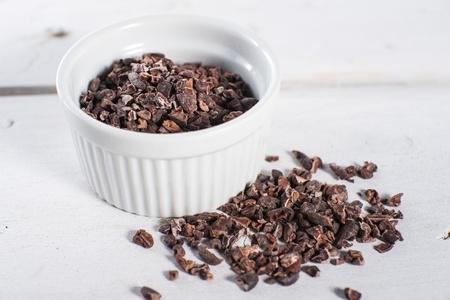
How To Make Homemade Cocoa Powder
Using Cacao Part 3
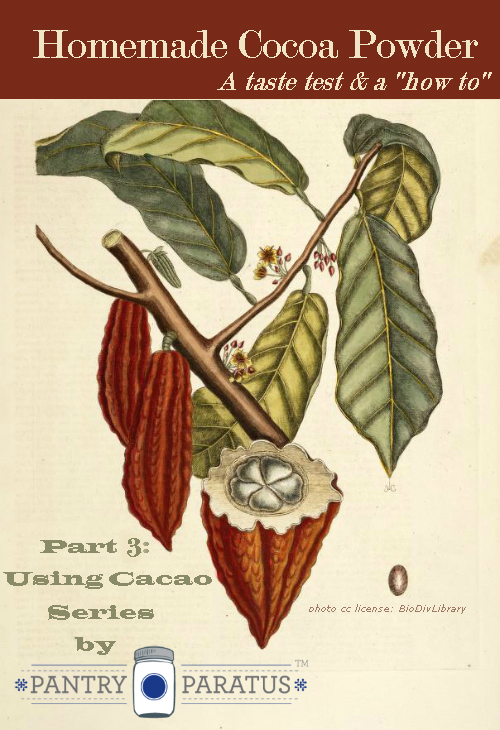
I suffer from high expectations, and since I use chocolate to self-medicate the consequences of that, I decided that I should begin applying my high expectations to the chocolate itself. First, is it ethically produced chocolate? Is it fresh? And then, if I’m getting those two things how on earth can I have it affordable? The answer lay within the nearest bag of organic, fair trade cacao nibs. By purchasing bulk through Pantry Paratus, I am getting a great price. By grinding my own nibs into powder, I am getting the freshest product possible.
Taste Test
I wanted to know if I would really prefer it to the others on the market.
I did a cocoa powder taste test.
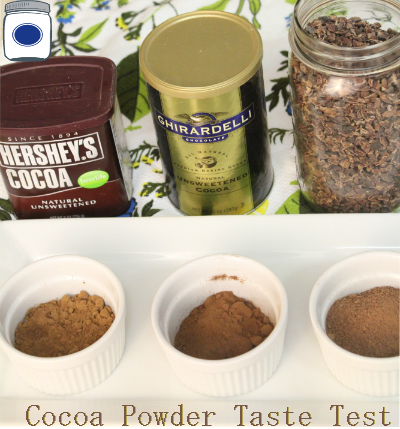
It was hardly a scientific approach. The Hershey’s Powder and the Ghirardelli were in my pantry already. Both were within the expiration dates by a wide margin but I highly doubt I purchased them simultaneously so they are likely differing ages; they were stored properly and in the same conditions.
RESULTS:
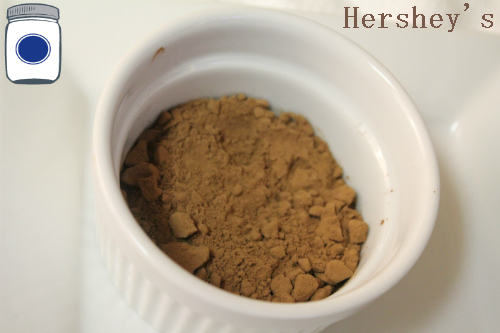
Tired. Bland. Slightly clumpy but a nice powder texture.
That was the Hershey’s. No real complaints but definitely my least favorite. It requires more to get the same chocolatey flavor.
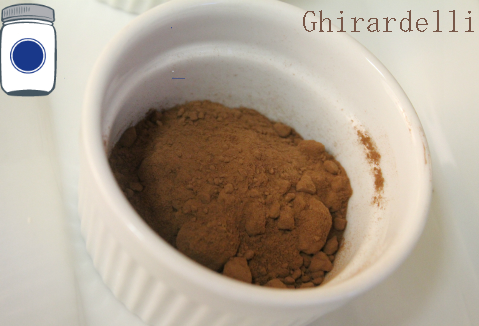
Good flavor, nice powder. But expensive.
Yup, that would be the Ghirardelli’s. Having done a taste-test between it and Hershey’s, I would say that Ghirardelli’s is the better powder by far due to texture and a more potent chocolate flavor. I deliberately did not alter these photos to improve lighting; look at the difference in color between Hershey’s & Ghirardelli’s.
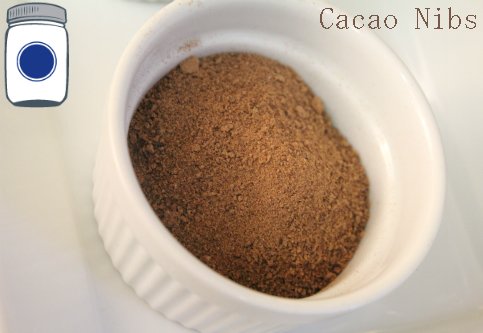
Best value (hands down), freshest flavor, and known origin.
Extra steps and cleaning.
Without a doubt, I really do prefer the home-ground cacao nibs flavor-for-flavor. Other powders remove much of the cacao fat so that it is shelf-stable, but it is where the deep, bitter flavor resides. You are retaining that with cacao nibs, so fewer are needed to get a rich flavor. With Ghirardelli selling for over $18 a lb, I think I’ll take the DIY method with the cacao nibs. I use my coffee grinder so it isn’t really more work, but it is an extra step and the grinder does make one more thing in the dirty-dish pile. Knowing the human trafficking involved in the chocolate industry, though, it feels extremely selfish to voice the “ugh, a dirty dish to feed my gluttonous indulgence for chocolate” complaint outloud. <yup, erased and re-wrote the last paragraph twice—don’t want to sound like a horrible person OR like a self-righteous one. It’s the chocolate talking. >
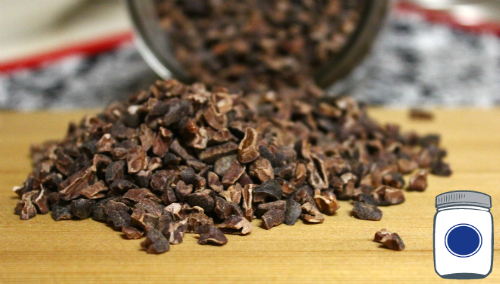
How To Grind Cacao Nibs
The high level of fat in the nibs means that you should never use an electric grain mill. Use either a solid and trustworthy food processor, a hand-crank grain mill with the stainless steel burrs, or a coffee grinder. You will make your appliance earn its spot on the counter with this job, though, so be sure it is a tough one. You will have to grind it several times. It may never come out with the fine powder to which you are accustomed (shelf-stable powder also have a lot of the cacao fat removed), but the right appliance and multiple grindings can do it. As you grind, you may need to pause and remove the gummy cacao fat (“liquor”) on the bottom of the grinder several times. Store your powder in an air-tight container in the freezer for maximum shelf-life. Remember that there is a high percentage of fat in that powder and it will go rancid. Ideally, only grind what you plan to use within the week.
I’m done buying the store-bought stuff when fresh, full-flavored cocoa powder can be made so quickly, ethically, and affordably. If you would like to pick up a 1 pound bag of cacao nibs for a great price, get them here with Pantry Paratus.
Humbly signing off to go wash dishes,
Chaya
Did you miss the other articles in the Using Cacao Series?
Part 1: Is Cocoa Powder and Cacao Powder the Same Thing?
Part 2: Chocolate By Any Other Name (Chocolate Defined)
All Photos are property of Pantry Paratus. Feel free to share or pin them in conjunction with this blog, but please keep proper attribution. Thanks in advance.

Thank you for the info
Electric coffee grinders and food processors are ok, right? Just not an electric grain mill? Thanks for the great article! We have nibs and i was just wondering if I could grind them.
I would only use an electric coffee grinder or food processor–or a hand crank mill. Don’t use an electric mill, however, because the moisture content in the cacao will gum up an electric mill. You need to use something designed for foods with high moisture content. I hope that helps!
Another reason to not use Hershey’s or Ghirardelli or Nestle is that they do not buy ethically harvested beans and they source their beans from farms that use slave labor, including young children. Please only eat chocolate and cacao products that are ethically and sustainably harvested with the workers being taken care of.
Exactly right! In fact, we’ve written a few posts about child slavery and about the decimation of rainforests, too. You might like this article that talks about why we should care.
Sometimes what Americans perceive as child “Slave Labor” is young members of an extremely poor village given a chance by a local grower to earn some money. Judging every countries practices by our spoiled perceptions is fairly arrogant.
This is so cool. How exactly would you substitute this for regular cocoa in recipes? Use a little more homemade cocoa powder, and then reduce the fat in the recipe? Any tips would be greatly appreciated.
Oh, a couple more questions. Are the nibs easier to grind if they’re roasted first? And should they be refrigerated/frozen before grinding?
Also, it seems to me that if you’re making a recipe, if you added some of your sugar along with the cacao nibs to your coffee grinder, the nibs would grind easier.
Sam,
It’s exactly the same in recipes—a 1:1 if you will, for where it calls for cocoa powder. There is a natural fat in the chocolate, but if a chocolate recipe is reduced fat and yet calls for regular cocoa powder, it would be close to the same in fat content. You are probably right that they WOULD be easier to grind if roasted first–don’t know why I haven’t tried that! They are a bit gummy when grinding, so anything like sugar or a tad bit of a starch (like potato starch) would work if it doesn’t change your original recipe. Great ideas that I want to try myself, thanks!
Thanks so much for your help, Chaya. I ordered some organic cacao nibs today and hope to try grinding them once they arrive! 🙂
What is the shelf life of your homemade cocoa powder
It is less, at room temperature, than store-bought brands because the fat has not been removed. I suggest keeping it in the freezer if you can, and that will extend it for 6 months or more, but it is better fresh and easy to make. Just make a batch to last for a month or two at a time and you’ll taste the difference.
Afraid i’ve taken the long road and ’til now improved just a little bit each time: from alkalized unfattened “cacao powder” ( cocoa powder really… although sold as “cacao” ) to alkalized “cacao powder” with 22-24% fat , then non-alkalized cacao powder ( not really sure if cocoa or cacao ) … and finally, just until recently … enjoying non-alkalized cacao powder with 22-24% fat ( once again, not really sure if it comes from roasted or raw beans ) .
Decided to improve, now i’m bent on grinding beans by myself. Benefits are quite clear and moreover… it makes perfect sense to do such thing: much higher quality, all the delicious natural fat, control over the whole process … and one even get to decide which type of beans to buy/use … something i never suspected to be so important, given the amount of different type of high-quality beans there are on the market ( Porcelana, Chuao, Arriba, Java “A” … ) … so I’m definitely excited about this huge leap .
Now, i’ve been chatting ( on a forum ) for a while with some other people also interested … more or less… on this same subject. Some even went ahead and bought cacao nibs, grilled ’em ( on a mechanical mill I’m afraid ) to powder and were quite happy with that..However, i was worried about the grinding process being too “violent” on the nibs, so i asked another forum user to try grinding beans on his ( electric ) coffee grinder with adjustable ceramic mills.
Don’t ( can’t ) drink coffee myself, but am aware “coffee-people” with high quality standards don’t like to use any regular coffee grinder, but the type that let you adjust its mills for each different type of coffee bean .
Sadly enough … the end result was horrible, and those cacao beans turned into some kind of sticky paste.
Don’t own a coffee grinder myself, and was thinking about buying a nice ( manual ) one … but worried it wouldn’t work either. Also worried about what type should i choose… essentially blade Vs. burr models .
Couldn’t find more info about this very issue, so honestly… have been stalled for a while.
Talked about this with a friend of mine that love to cook ( not sure why i didn’t talk him about this sooner ) … and pointed me to your fantastic article .
Here, I’ve found some more useful tips, hope , a very interesting comparison between hershey’s / ghirardelly & homemade powder i’d wish to have found sooner … and also answer to some other questions i had in mind , so can’t thank you enough for all this .
Was still wondering if i should buy a ( manual ) coffe grinder with ceramic burrs ( certainly not blades ) … but i take they should be of stainless steel , not ceramic .
Also, i intend to use cacao beans instead of nibs … so maybe a coffee grinder won’t be able to handle ’em ?
Have you ever tried grinding cacao beans instead of nibs ?
One more question:
Have you tried using homemade cacao powder for desserts ? From what i’ve read so far, seems like it’s way harder than using regular alkalized cocoa powder … although “in theory” it should all come down to use the right amount of baking soda and/or chemical yeast ? … the higher amount of fat also comes to mind… that could also be a nice big issue to handle .
Thanks once again for your article and thanks in advance if you happen to find a moment to answer my questions ( in case you can that is ) .
Wish you the best !
I’ve only ever tried nibs–I have a source for fair trade nibs at an excellent price (Pantry Paratus), and that’s the product I’ve always used. I don’t find it difficult to bake with in the least, but I hear some people feel they’re too bitter. I suppose that a person could add more of the sweetening agent, but I’ve always been a dark chocolate person, myself, so I’ve never found that as the result. Freshly ground cocoa, if anything, is moister and so is the end product. Yes–I couldn’t really help you with what type of grinder to buy. We sell a hand crank coffee grinder at Pantry Paratus, but honestly–I use the world’s cheapest electric. Perhaps you are right–perhaps there is a difference between nibs & the whole bean. After all, the nib has been exposed to air is likely drier than the whole bean.
I use electric blade grinder. Don’t put too much, use short (5 seconds or so). Comes out good, maybe little sticks to the blades.
Ha ha I love your writing style, it’s good to have a laugh and show your realness. Thanks for this. I like to be excessive so I purchased 15kg of cacao nibs for cacao ceremony, and now I will be making powder out of them too!